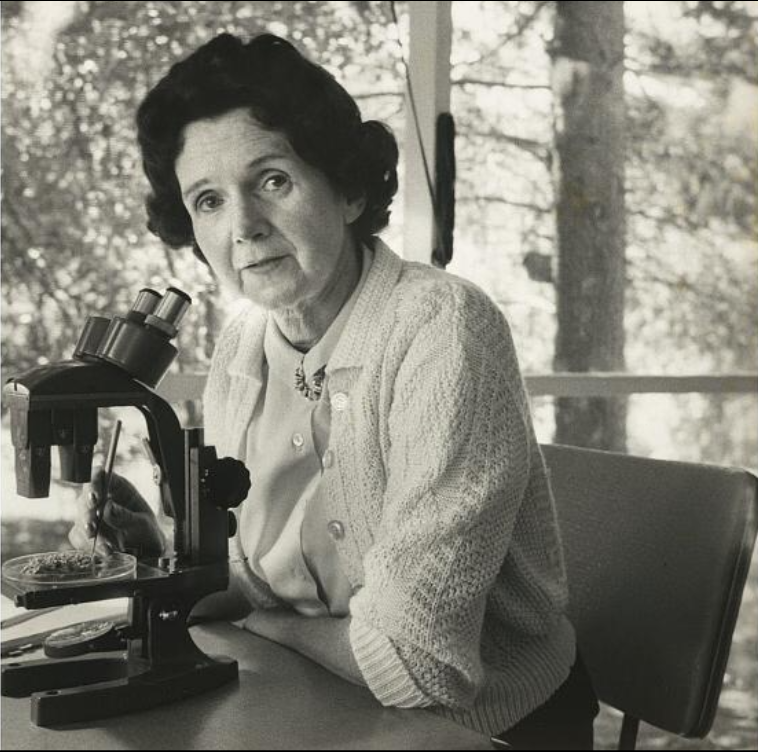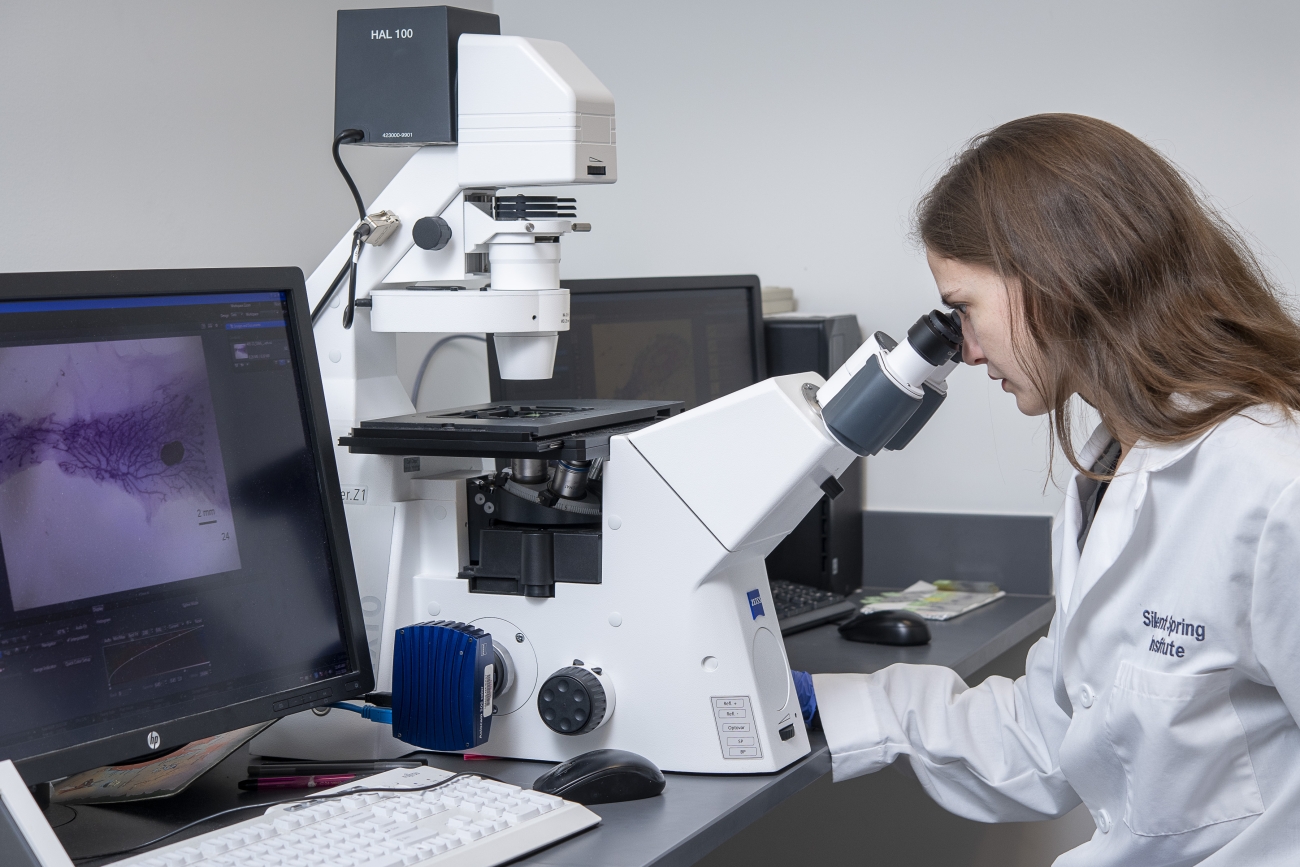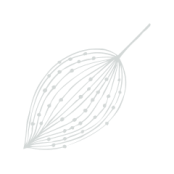The Legacy of Rachel Carson
When Rachel Carson published her landmark book, Silent Spring, few people questioned the widespread use of untested pesticides. The year was 1962. Powerful new chemicals not only helped farmers control insects, but they also served as exciting evidence of record advancements in science. One such pesticide, DDT, had even protected American troops during World War II by killing malaria-causing mosquitoes. The inventor had been awarded the Nobel Prize.
An Uncontrolled Lab Experiment

Carson offered a different perspective. The government was failing to ensure that these chemicals were safe, she warned. Millions of acres of crops were being treated with DDT, entire counties sprayed. In their eagerness to increase profits, chemical companies were manufacturing new pesticides rapidly and carelessly. Carson charged that Americans had become the subjects of an uncontrolled lab experiment. An ecologist and a meticulous observer of nature, she traced toxic pesticides through the food chain, vividly illustrating how they accumulate in the bodies of animals and (by extension) humans to cause cancer and other severe health problems. Some of the effects she reported—such as the dangerous thinning of bird eggshells—were the result of endocrine disruptors, although the chemicals had not yet been given that name.
Before Silent Spring’s publication, Carson had already established herself as the leading science writer in America. She spent most of her career as a marine biologist and editor for the U.S. Fish and Wildlife Service, and she drew on her knowledge of ocean life to write three popular books about the wonders of the sea. To write Silent Spring, Carson exercised her full powers as both an exacting scientist and a lyrical writer, synthesizing complex findings from biology, chemistry, physiology, and medicine and translating them into window-clear prose. The result was a compelling book revealing an environmental health crisis that had been largely invisible to the public. Readers started calling their representatives.
To write Silent Spring, Carson exercised her full powers as both an exacting scientist and a lyrical writer ... The result was a compelling book revealing an environmental health crisis that had been largely invisible to the public.
Backlash and a Personal Health Crisis
The chemical industry also responded, spending a quarter-million dollars—the equivalent of 2.5 million today—in an attempt to discredit Carson and her work. Applying the same tools that tobacco companies were using to undermine research linking smoking and cancer, companies such as Monsanto tried to cast doubt on Carson’s findings. But her book contained 55 pages of references. It also included a list of the expert scientists she had asked to review her manuscript, and they came to her defense. President John F. Kennedy launched an investigation into Carson’s claims.
During this time, Carson worried privately about her own health. She was struggling with metastasizing breast cancer. Concerned that the chemical industry might suggest her illness had provoked her to write Silent Spring, she kept her condition secret. When she spoke before Congress in 1963, calling for more policies that would protect wildlife and human health, she had lost her hair and was wearing a wig. Less than a year later, she died.
An Issue of Human Rights
Carson saw exposure to toxic chemicals as an issue of human rights. In her appearance before Congress, she asserted that the government had a duty to protect Americans from contaminants that could make them sick. Her work also demonstrated that the environment and public health are inextricably linked. Silent Spring launched an environmental movement, not only helping to create the department that would become the Environmental Protection Agency, but also inspiring the Clean Air Act (1963), the Clean Water Act (1964), the Toxic Substances Control Act (1976), and many other groundbreaking pieces of environmental legislation.
Rachel Carson and Silent Spring Institute

Silent Spring Institute continues Rachel Carson’s legacy by uncovering chemicals that cause breast cancer and working to reduce their production and use. All six pesticides featured in Silent Spring have been banned in the United States, but much has remained the same since the book’s publication. The chemical industry has continued to develop hundreds of other pesticides, many of which have been linked to breast cancer. And, because DDT is highly persistent, people are still being exposed today.
Manufacturers have also flooded the market with thousands of other synthetic chemicals that have uses beyond agriculture, such as solvents and plastics, with little regard for the safety of the public. More than 50 years later, most chemicals on the market have not been tested for their potential to cause cancer and other diseases.
What do we know about cancer-causing chemicals?
Carson argued that if chemical manufacturers are going to release untested chemicals into the environment, “we had better know something about their nature and their power.” Scientists at Silent Spring Institute are working to understand how environmental contaminants influence the development of breast cancer and the best ways to identify them. Our goal is to prevent the use of cancer-causing chemicals by improving how regulators evaluate chemicals for safety and encouraging manufacturers to make safer products using safer processes.
- We study the biological mechanisms behind breast cancer, investigating what happens from the time of chemical exposure to the development of a tumor.
- We develop methods for predicting a chemical’s potential to cause breast cancer based on its ability to alter hormones that affect the breast.
- We create authoritative lists of chemicals that could increase breast cancer risk. Our latest list includes 900 potential breast carcinogens found in consumer products, drinking water, workplaces, and the environment.
At Silent Spring Institute, we make the invisible visible, as Rachel Carson did, so that people are empowered to take action personally and in their communities to reduce exposures to harmful chemicals.
How can we share what we learn with the public?
Carson expressed the conviction that there would be “no peace” for her until she had informed Americans about the dangers of exposure to untested pesticides. At Silent Spring Institute, we believe that people have a right to know about toxics in their homes, their workplaces, their drinking water, and their bodies. We make the invisible visible, as Carson did, so that people are empowered to take action personally and in their communities to reduce exposures to harmful chemicals.
- We partner with communities impacted by pollution, sharing results from our studies directly with participants.
- We create digital tools to help people learn about their personal exposures and take action to protect their health.
- We study ways to communicate about people’s exposures so they can make informed decisions about their health.
- We develop and share resources, such as our Detox Me app, to help people avoid harmful chemicals in their everyday lives.
How can we inform policies that protect public health?
In the brief period between the publication of Silent Spring and her death, Carson profoundly shaped public policy. She worked hard to counter the influence of chemical manufacturers, collaborating with the Kennedy administration to write legislation and speeches.
The chemical industry continues to produce the majority of research about its own products, and Silent Spring Institute is one of the few environmental health organizations pushing back against its influence using science. We encourage and shape health-protective policies and practices in many ways.
- We create new scientific knowledge by addressing questions critical to public health.
- We submit expert comments to the Environmental Protection Agency on proposed regulations.
- We provide written and in-person scientific testimony to inform federal and state bills.
- We partner with other scientists, non-profits, policy experts, and activists to ensure they have access to necessary science as they work to protect the public from toxic chemicals.

If we are going to live so intimately with these chemicals eating and drinking them, taking them into the very marrow of our bones - we had better know something about their nature and their power.
Rachel CarsonSilent Spring